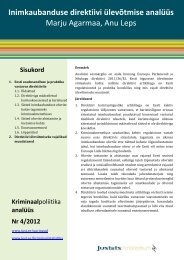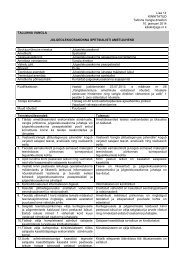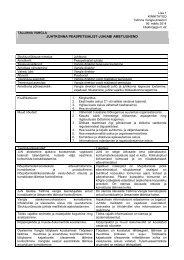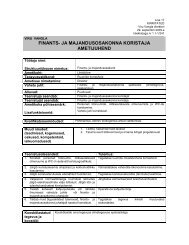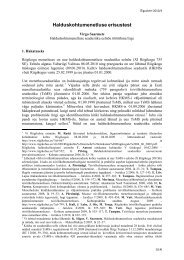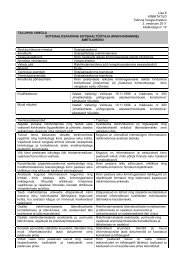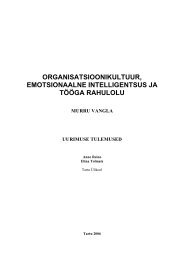Kannatanu kriminaalmenetluses - Justiitsministeerium
Kannatanu kriminaalmenetluses - Justiitsministeerium
Kannatanu kriminaalmenetluses - Justiitsministeerium
You also want an ePaper? Increase the reach of your titles
YUMPU automatically turns print PDFs into web optimized ePapers that Google loves.
Many questions arise when we talk about the victim in the context of adversarial procedure.<br />
There are traditionally two competing parties, the accused and the prosecutor. As J. Doak<br />
notes, one cannot make the victim a party to the proceedings without ruining the structure of<br />
the adversarial system. E. C. Blondel has offered two different ways for the victim to<br />
participate without contradicting the adversarial procedure: he can act as an amicus curiae or<br />
as a relator in case of qui tam statutes.<br />
The Code of Criminal Procedure (CCP) of Estonia makes the victim a participant in the<br />
criminal proceedings. It also provides that the victim is a party to a court proceeding. Whilst<br />
the victim is a party to a court proceeding, he can use rights like summoning witnesses and<br />
cross-examining the accused. If used, these rights might not present a problem when the<br />
victim participates through a representative. But when participating by himself while not<br />
having any education in law, this probably causes more trouble than satisfies the interests of<br />
the victim or other participants.<br />
The rights of the victim may be divided into service rights and procedural rights. The former<br />
denotes rights like notifying the victim of any procedural acts or providing him a translator if<br />
he is not fluent in Estonian. Procedural rights are set forth in § 38(1) of the CCP. For<br />
example, a victim has the right to submit evidence, participate in the court hearing and give<br />
consent to the application of settlement proceedings or refuse to give such consent.<br />
When giving victims more rights, we come to the question of balance of rights between the<br />
victim and the accused. Whilst service rights of the victim should not cause any concern,<br />
procedural rights do. The presumption of innocence collides with the presumption of victim.<br />
The latter is a premise that allows to hold someone a suspect or to judge the accused. These<br />
two concepts are implemented in every criminal matter, although they are inversely<br />
proportional. Because of this characteristic, the competing rights of the victim and the accused<br />
lead to a zero-sum game.<br />
Victims of crime are mostly interested in participating in the sentencing process. Some jurists<br />
say that it is irrelevant what a victim has to say because he may be vindictive or forgiving,<br />
willing to confront the accused or afraid of him etc. These differences produce incomparable<br />
court judgments among comparable crimes. Nevertheless, victim impact statements are a<br />
much used way in the USA to give the victim a chance to participate in the sentencing phase.<br />
55



